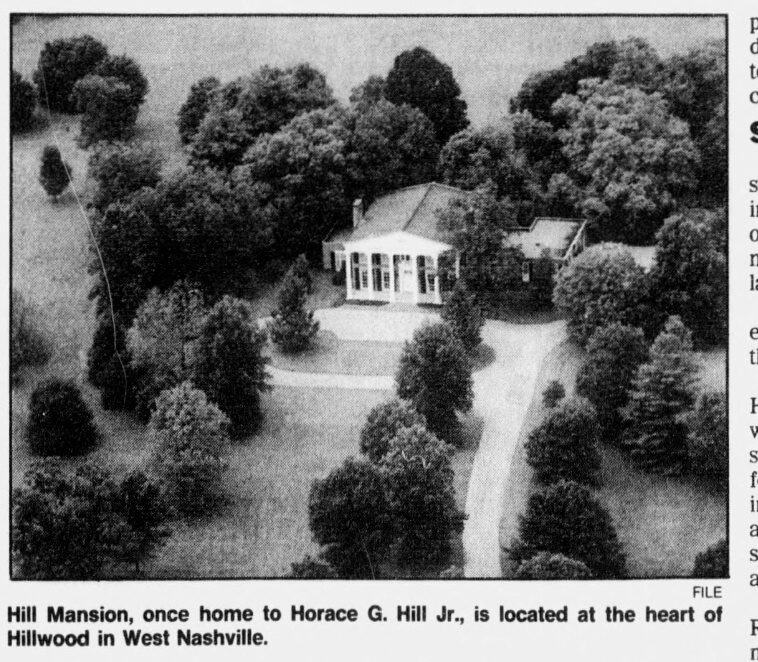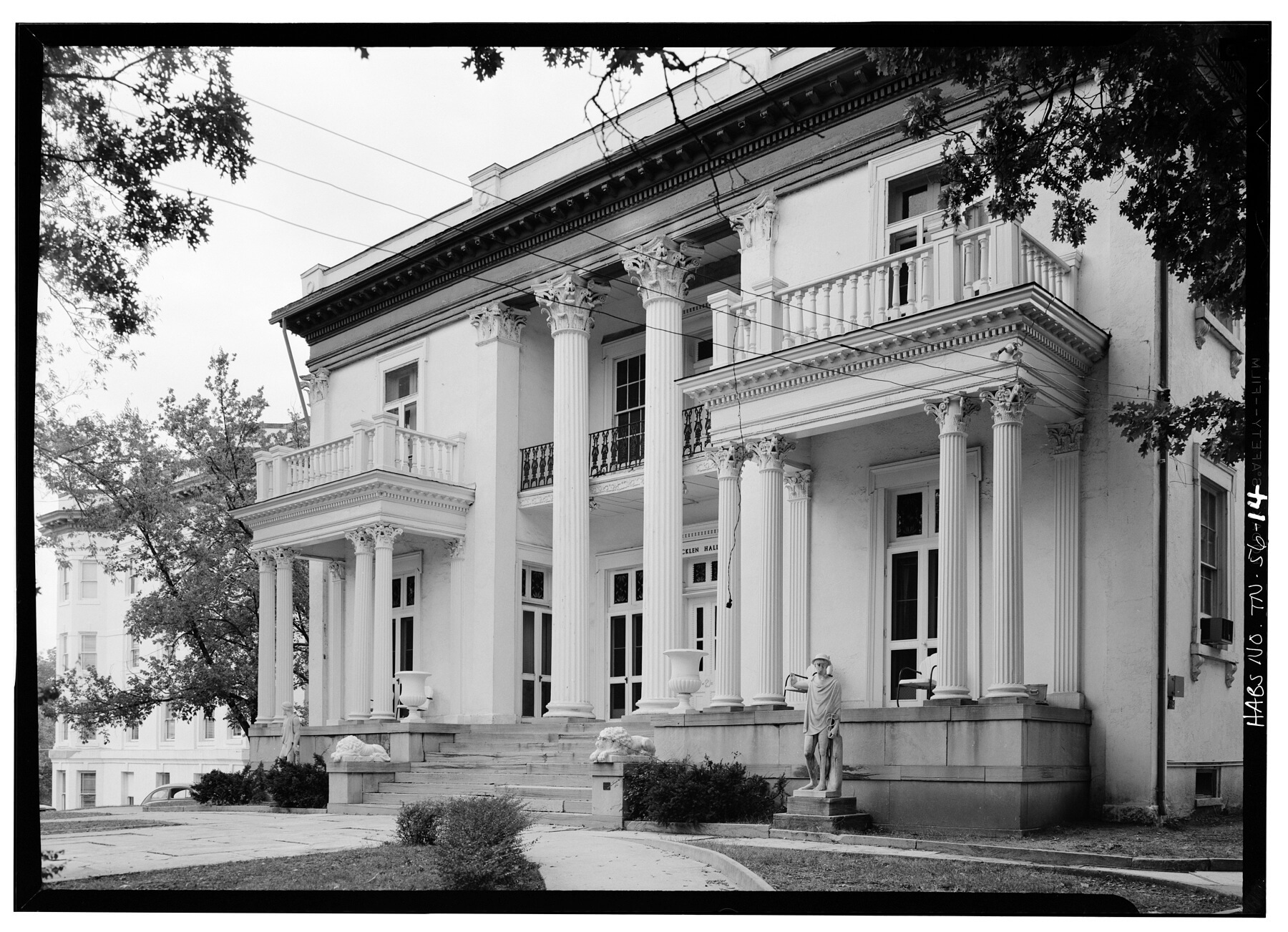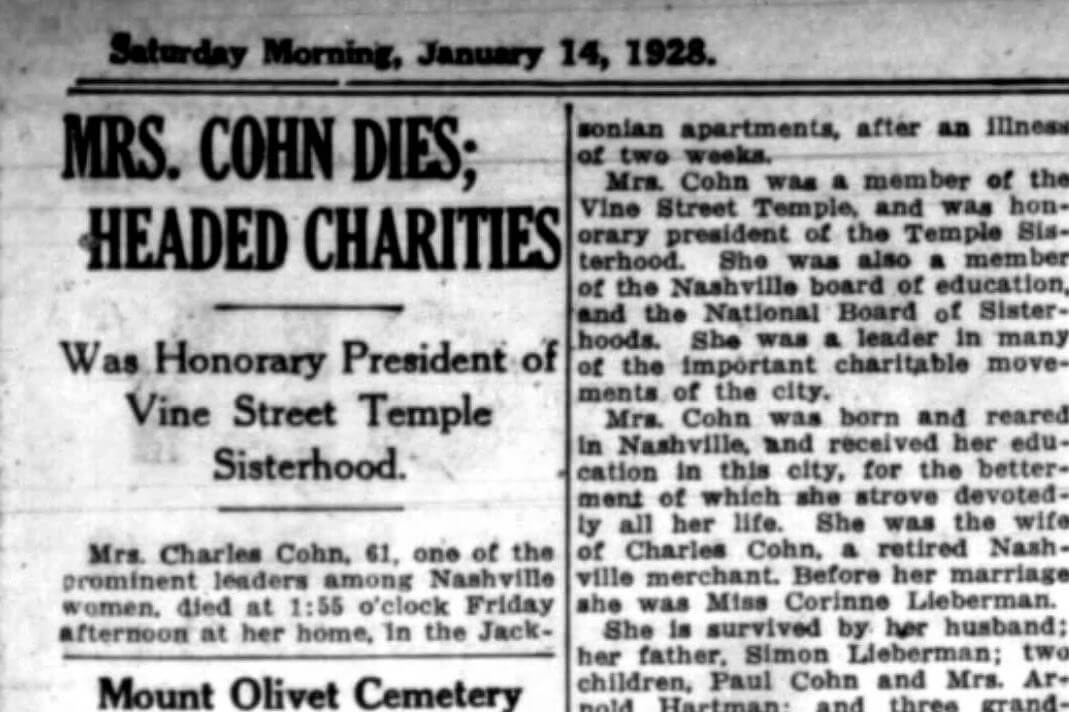Cohn, Elliston, Hill, Taylor and Acklen. These names mark buildings, neighborhoods, street signs and organizations around Nashville, yet many people may not be aware of the rich history behind each one. Corinne L. Cohn, Joseph Elliston, H.G. Hill, Preston Taylor and Adelicia Hayes Acklen Cheatham may have unfamiliar backgrounds, but their contributions were such that someone felt they deserved recognition.
Have you ever wondered who these individuals are?
We did the digging for you to uncover the stories behind the names. Next time you drive Elliston Place, pass the Cohn Learning Center or any of the Hill Centers, you will have a better idea of the individuals behind the names and their roles in creating the Nashville of today.
Corinne L. Cohn
Cohn Junior School, Cohn High School, Corinne L. Cohn High School and Cohn Adult Learning Center are all names the landmark building on Park Avenue in Nashville’s Sylvan Park neighborhood has held. While the building may be well-known, the namesake perhaps not so much.
RELATED: How to Spend a Day in Sylvan Park
Born in 1866, Mrs. Corinne L. Cohn worked to grow Nashville’s educational community. After being introduced to the idea of junior high school education in Louisville, Mrs. Cohn returned to Nashville, and she, along with her husband, worked to establish the first junior school in the city. Shortly following her death in 1928, the doors opened to Cohn Junior School, the first school in the Nashville school district named for a woman.

Mrs. Cohn recognized the importance of the way in which you educate people, not just the brick and mortar where classes are held. To commemorate this, Mr. Cohn continued to donate to the school by providing books and a trust fund to the library.
Even after both individuals passed, Cohn School continued to serve its community’s educational needs. Only eight years after its opening, Nashville City School Board added on an extra wing in order to open a high school in the neighborhood. Since then, the West Nashville school has seen more changes to the building, but most notable are the adaptations made to the school itself.
Right now, the building serves as an institute of learning for the community, but with a new name and purpose: Cohn Adult Learning Center. From alternative high school classes to a Senior Renaissance Center, the school is meant to provide educational access to a wider variety of people. The building maintains the integrity of Mrs. Cohn’s intentions: Fulfill the educational needs of the Nashville community. (source; source)
Joseph Elliston
If I had to guess, I doubt Joseph Elliston expected a street named in his honor when he came to Nashville in 1799. Back then, Nashville was not the “it” city that it is today. In fact, it did not become a city until 1806, but the riverside land quickly developed into the political center of Tennessee, and Joseph Elliston both witnessed and took part in this rise to preeminence.
From 1814-17, he served as the fourth Mayor of Nashville, and he continued to live in the city until his death in 1856. During these years, he worked as a silversmith, a practice that brought him to Nashville in the first place. As for why we remember him today, it may be less for his policy and more for his generosity. Elliston’s property on which he built his family home, called “Burlington,” spanned from Charlotte Pike beyond West End . Throughout his lifetime and following generations, tracts of this land were given to the expansion of the city.
In 1837, Joseph Elliston built the House of Industry for Girls for Nashville’s young women. He then passed on the leadership of the House to prominent women, one of whom was his daughter-in-law, Elizabeth Boddie Elliston, whose work further solidified the Elliston name as one of importance in Nashville.
Elizabeth contributed to the educational needs of the city through her involvement with Vanderbilt University. In addition to selling a portion of the Elliston plantation to the school to expand upon, Elizabeth recognized the need of students for loans and funding. She became one of the founding members and first president of the Ladies Aid Society for Students of Vanderbilt University, which was later shortened to the Vanderbilt Aid Society. For years, this board helped to raise funds to offer loans to men wishing to pursue a higher education that, without financial support, would not be able to do so. (source; source; source)

Preston Taylor
Preston Taylor is the namesake of both Preston Taylor Housing and Preston Taylor Ministries. The man himself was born in 1849 to enslaved parents in Louisiana. In 1884, he moved to Nashville, where he quickly established himself as a successful businessman and leader of the black community.
His efforts went towards growing the city and making it more accessible, particularly to the black community. After purchasing 37 acres of land, Taylor founded Greenwood Cemetery on this property. He later opened Greenwood Recreational Park, which was the first amusement park open to the black community in Nashville and annually held a state fair. He also co-founded Citizens Bank, launched specifically towards the black community. In addition to his business endeavors, he worked as a parish minister.
While in Nashville, Taylor worked with state leaders to accomplish more than he could do alone. The most notable result of his advocacy campaigns is the opening of Tennessee State University in Nashville (prior, Tennessee Agricultural and Industrial Normal College). He also organized the National Colored Christian Missionary Convention in 1917. Preston Taylor saw needs in his community and spent his life working to meet them. (source; source)

H.G. Hill
Anyone who’s lived in Nashville for more than 20 years recognizes the name H.G. Hill as a family-run chain of grocery stores. Since late 1896, when H.G. Hill, Sr., first earned enough money to purchase the plot of land upon which his grocery store was built, the business has grown and evolved. In the early years, Hill’s involvement with realty was simply strategic for his grocery stores.
Hill’s success was at least twofold. First, the family owned the wholesale distribution side of the grocery business as well as the retail end, thus eliminating the middle man. Additionally, Hill purchased the right hand, corner property at major stops along the street car line. Then, as land became available, Hill purchased the adjacent properties. In the process Hill developed some of our first suburbs including Five Points, Elliston Place and Hillsboro Village. Today, H.G. Hill remains one of the largest private landowners in Davidson County.
With his successes, though, he began to look outward towards further expansion of the family business. He began to buy land not solely with the intention of placing a food store on it, but developing it for other shops. Thus, the realty company took root. Up until 1993, both the Hill Food Stores and the Realty Company operated under the family business until the former was sold to focus solely on development in Nashville. Given the city’s current state of development, H.G. Hill’s business saw an opportunity and has had an impact on the city’s retail scene.
Hill’s son continued his grandfather’s idea of expansion by essentially pioneering the concept of suburban neighborhood shopping centers in Nashville. One of which — Green Hills’ Hill Center — puts a particular focus on sustainability. Recognized internationally for their programs that incentivize more eco-friendly practice, the growth mindset of the Hill Center remains. (source; source; source; other references: source)


Adelicia Acklen
Look no further than Adelicia Hayes Acklen Cheatham for a glimpse of the quintessential “Old South” — rolling hills, large plantations and white-washed buildings — tainted by sin and slavery. No one story nor person better embodies this dichotomy than Adelicia Acklen.
Both luck and sorrow mark Acklen’s life. At age 28, she became a widow but simultaneously a millionaire, when her husband, Isaac Franklin, died and left her a hefty inheritance, which was built on her husband’s slave trading empire. With this money, she and her second husband, Joseph Aklen, constructed Belmont Mansion. The home, currently the largest house museum in Tennessee and located on Belmont University’s campus, was once part of a grand estate. The Italian-style villa housed a greenhouse, extensive gardens, a private zoo and even a private water tower.
During the war, Joseph Acklen died and Adelicia subsequently skillfully negotiated with both Union and Confederate forces to get her cotton through the battle lines and to England. There, she sold it to the Rothschilds for $960,000 in gold making her one of the wealthiest women in America.

Acklen opened up her home to the community to witness, and even share in, her luxury. Alligators and monkeys greeted visitors as they explored Acklen’s private zoo. An invitation to one of her summer gatherings was more than ideal because it featured a particular luxurious commodity: ice. These “ice parties” came to mark the summer months, offering a release from the heat of the day in the moonlit hours during which they were held.
Plagued by the deaths of family members, Acklen spent the last bit of her life in Washington, D.C., with her sole surviving daughter, passing away on a shopping trip in New York City due to pneumonia. Upon moving, she sold her tract of land, which was purchased soon after by two women from Philadelphia, who went on to open a girl’s school, Ward-Belmont, which eventually became Belmont University. The legacy of Adelicia Hayes Acklen Cheatham can be seen in Acklen Avenue, Belmont Mansion and Belmont University. Her beloved home is a landmark historic site in the city. (source; source)

There you go! Now when you pass by a street sign or school building bearing one of these names, you will know the story behind it.
Thank you to Ridley Wills, III, for sharing his extensive knowledge of Nashville history with us.
**********
Get to know Nashville in all new ways — subscribe to StyleBlueprint for the best of local! Click HERE.



















